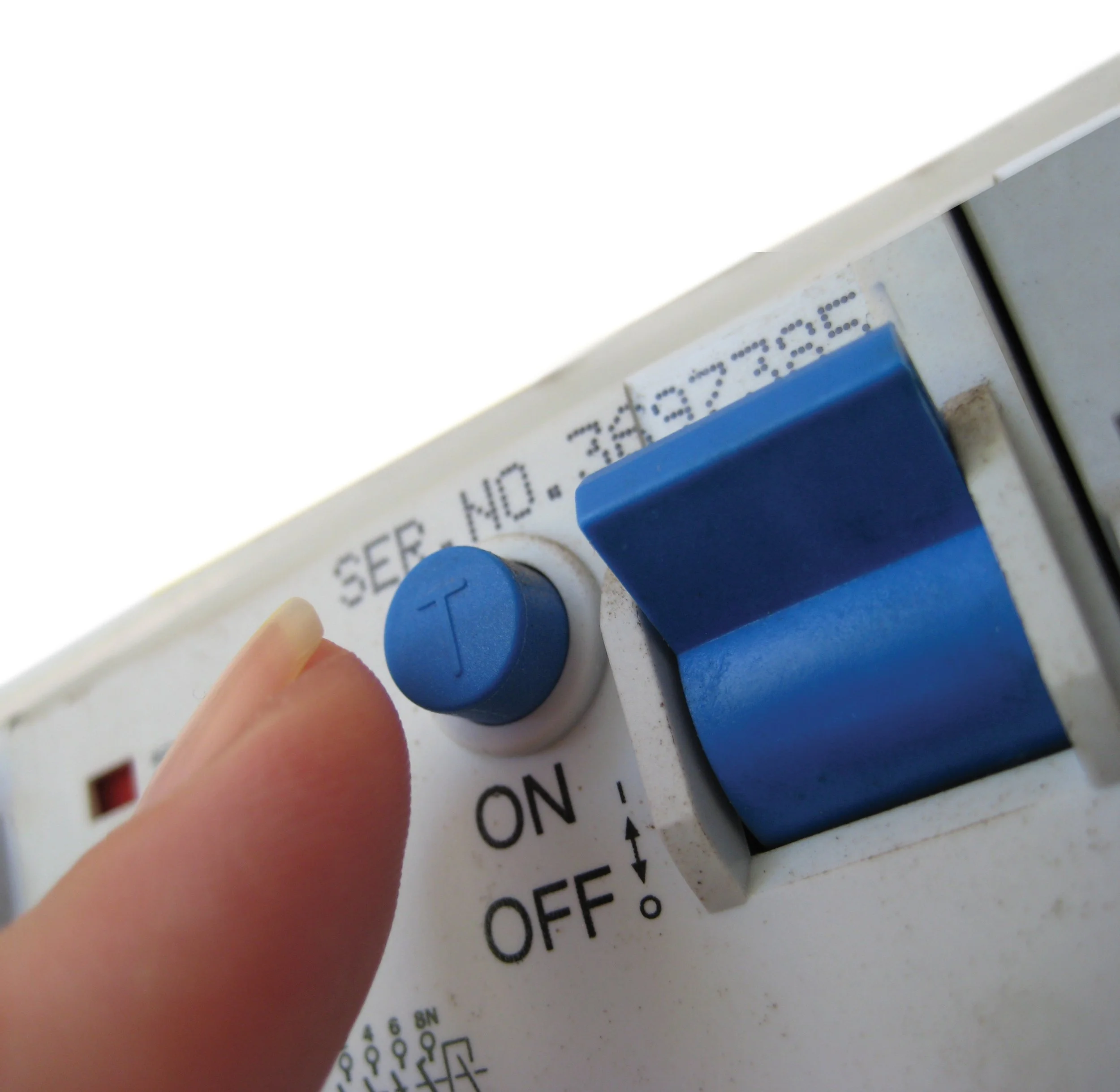Safety Switches
According to Energy Safe Victoria “Fire brigades respond to more than 300 domestic electrical fires each year”. Caused by old wiring that has degraded or is unable to cope with the demands of modern electrical appliances and equipment. Having a Safety Switch installed on your home will save lives and potential fires.
WHAT IS A SAFETY SWITCH?
A safety switch is a device that quickly switches off the electricity supply if an electrical fault is detected, to minimise the risk of electricity-related fires, electric shock, injury and death. A Safety Switch will shut off the electricity supply when current leakage is detected.
WHY YOU NEED A SAFETY SWITCH?
In the event of an electrical emergency, safety switches avoid serious injury from electric shock and possible electrical burns by stopping the current flowing through the person.
However a safety switch will only protect the circuit it is connected to. Your air conditioner may be on a different circuit to your powerpoints. Therefore it is important to have multiple safety switches installed within your home or office as there’s to be multiple electrical circuits running through your home. For example you will have different circuits for your power points, lights, air conditioning, oven, hot water or pool equipment.
HOW TO TELL IF YOU HAVE A SAFETY SWITCH ALREADY?
Want to know if you have a safety switch installed already? To do this, you need to check your switchboard. If a safety switch is installed there will be a ‘T’ or ‘Test’ button on the front face of the switchboard. The test buttons can be various colours and range in size and shape.
If you cannot identify a ‘T’ or ‘Test’ button or un-sure we suggest asking your electrician to help identify them during your next electrical service.
HOW TO TEST YOUR SAFETY SWITCH?
Safety switches should be tested a couple of times a year to ensure they are in good working order. An easy way to remember is to test them when you change your clock for daylight savings.
It’s important to let your household know when you are going to test, as the power supply to that circuit will shut off. You can test the safety switch by pressing the 'test' or 'T' button. The safety switch should immediately trip to the 'off' position, and your power for that circuit should go out. You will then need to manually return the switch to the 'on' position after testing.
If your safety switch does not trip to the 'off' position after you have pressed the 'test' button, turn off the power immediately and call a licensed electrician.
Watch the video below for complete testing instructions.
Not confident with testing? Thats completely understandable, your Electrician will happily test on their next service visit.

